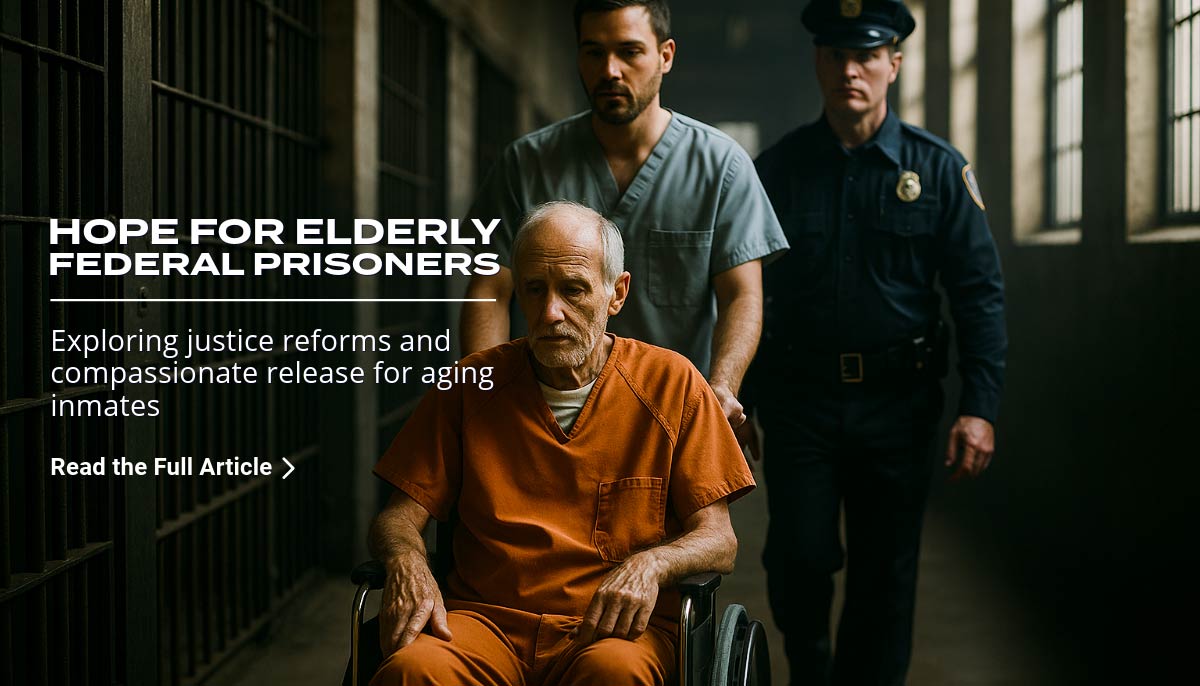
The Silent Crisis Behind Bars: Aging and Illness in Federal Prisons
As America’s prison population ages, thousands of elderly and seriously ill individuals remain locked behind federal bars, often long after they cease to pose any risk to public safety. With 4,656 federal inmates aged 65 or older as of 27 September 2025 —and an annual healthcare cost exceeding $1 billion—this hidden crisis is both a moral dilemma and a financial burden.
Though the federal prison system has long had mechanisms for compassionate release or elder parole, these options are rarely granted. The bureaucratic barriers are high, and the process is slow. But today, public awareness is growing, and Congress is finally beginning to question why we continue to incarcerate frail, dying people who could be released with dignity.
A Ray of Hope: Policy Shifts and Congressional Pressure
In recent years, momentum has built around compassionate release reform. Lawmakers are putting pressure on the Bureau of Prisons (BOP) to justify the continued detention of individuals with terminal illnesses or severe age-related conditions—especially in light of recent shifts in federal correctional policy, such as the Clean Slate laws and their impact in 2025. Many of these prisoners require extensive and expensive medical care, yet they are no longer threats to society.
The question is no longer should they be released—it’s why haven’t they been?
Advocacy in Action: Healthcare Professionals as Agents of Change
Medical professionals have a unique opportunity to lead the charge in reforming how the criminal justice system treats older adults. Here’s how they’re making a difference:
1. Pushing for Geriatric-Focused Justice Reform
- Diversion programs: Doctors, social workers, and psychologists are advocating for alternatives to incarceration, particularly for older individuals with mental health conditions or substance use disorders.
- Geriatric courts: These specialized programs connect vulnerable individuals with support services instead of prison time.
- Early release assessments: While many states have policies to review aging inmates for release, the implementation is sluggish. Healthcare professionals can push to streamline and humanize these reviews by providing critical medical insight.
2. Supporting Cognitive and Mental Health Evaluations
Older defendants may suffer from undiagnosed dementia or cognitive decline. By encouraging public defender offices to fund cognitive testing, professionals ensure fairer trials and sentencing. Additionally, advocating for mental health professionals to be involved in police responses can prevent unnecessary incarcerations of vulnerable older adults.
Educating for Impact: Building Bridges Between Healthcare and Corrections
Effective reform requires collaboration and cross-disciplinary education.
1. Training Correctional Health Professionals in Geriatrics
Most prison medical teams lack sufficient training in elder care and palliative medicine. Geriatricians can step in to train these teams, equipping them with the knowledge needed to identify and treat age-related health conditions behind bars.
2. Humanizing Hospital Care for Incarcerated Patients
Correctional bioethicists and healthcare advocates are working to improve hospital experiences for prisoners—such as reducing the degrading practice of shackling hospitalized inmates and ensuring their participation in advance care planning.
3. Preparing for Reentry: Life After Prison
After decades in prison, many elderly individuals face extreme difficulties reintegrating into society. Programs that focus on enhancing safety through reintegration are crucial in helping them rebuild trust, stability, and support systems. Tasks like filling prescriptions, scheduling doctor visits, or even navigating public transport can be overwhelming. Healthcare professionals can provide post-release support, helping these individuals adjust to a dramatically different world.
Advancing Research: Filling the Gaps in Geriatric Justice
Despite the growing number of older incarcerated individuals, there is a significant lack of research on their specific needs.
Key Research Needs Include:
- Understanding Geriatric Conditions: Cognitive decline, mobility issues, incontinence, and chronic disease are common in elderly prisoners—yet few studies examine how these impact incarceration or reentry.
- Identifying Risk Factors for Abuse or Falls: Older inmates are more vulnerable to physical abuse and accidents in prison environments not designed for their needs.
- Evaluating Community Reintegration Outcomes: Research is needed to design programs that help elderly former inmates rebuild social ties, access healthcare, and avoid homelessness.
The Path Forward: A Justice System with Compassion
The time for change is now. As the light shines on the injustices of incarcerating elderly and infirm individuals, the voices calling for compassion grow louder. From healthcare professionals and advocates to lawmakers and parole boards, a collective effort is underway to rethink how we handle aging in the justice system.
Compassionate release should no longer be a rarity—it must become a standard option for those who have paid their debt to society and now seek to spend their remaining days in peace, not in pain.
Final Thoughts
Our prisons were never designed to be nursing homes. Yet without meaningful reform, that’s what they are becoming. The conversation around elder justice in federal incarceration is no longer one of distant concern—it’s an urgent, human issue demanding immediate action, particularly as shifts in federal policy—like Trump reversing Biden’s order on private prison contracts—signal continued challenges in correctional reform.
By blending advocacy, education, and evidence-based policy, we can create a more humane, cost-effective, and ethically sound approach to justice for the elderly.
Let this be the generation that brings dignity back to justice.












